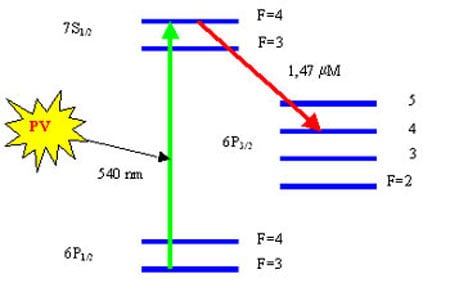Physicists in France and Armenia have demonstrated a new way to detect parity violation in caesium atoms. The result agrees with previous work on caesium and provides another technique for measuring the weak nuclear interactions that are responsible for parity violation in the Standard Model of particle physics (J Guéna et al. 2003 Phys. Rev. Lett 90 143001).

In quantum mechanics, parity is the operator that reverses all three directions in space. However, parity is not always conserved in nature. Lee and Yang first suggested this in 1956 to explain the decay of K-mesons and later that year Mrs Wu and colleagues observed parity violation in the radioactive decay of cobalt-60.
An accurate measurement of parity violation was made in Boulder in 1997. Two years later, the same team measured the strength of the parity violating weak interaction in a caesium atom when they determined the value of Qw – the weak charge of the nucleus – to a precision of better than 1%. This experiment measured how quickly the electric field of a laser beam could excite caesium atoms from the 6S ground state to the 7S excited state – a transition strictly forbidden by symmetry. The researchers found a deviation between the experimentally observed value and the theoretical value expected in the Standard Model. This deviation was large enough to imply physics beyond the Standard Model.
Now, Marie-Anne Bouchiat and colleagues at the Laboratoire Kastler Brossel in Paris and the Institute for Physical Research in Armenia have performed an independent measurement using an entirely new method to cross-check the Boulder result. Bouchiat and co-workers used a polarized laser beam to excite atoms from the 6S ground state to the 7S excited state in an electric field and found that there was an angular “atomic anisotropy” in the 7S states which violates parity. The researchers then looked at the transition from the excited 7S to 6P states –the transition following the 6S to 7S – using a “stimulation emission” technique which amplified the resonance of this allowed transition (see figure). The size of this amplification is used to determine the anisotropy coming from the excited vapour atoms that have violated parity.
Using their method the team was able to measure atomic parity violation to an accuracy of 9% but it hopes to achieve a precision of 1%in future experiments.



